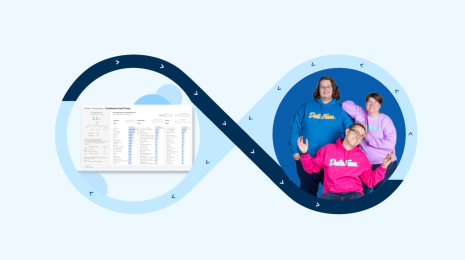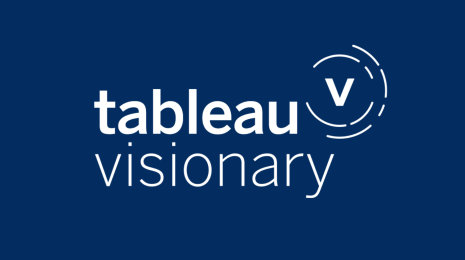Participating in the Iron Viz qualifiers? Here’s how to save time
Participating in Iron Viz is an accomplishment in itself. Win or learn – you can’t lose. Whether or not you place in the top 10 or make it to the championship, you are guaranteed to gain new skills and inspiration throughout the process. But what goes into putting together your visualisation, and how much time should you expect to spend? We asked previous Iron Viz finalists, contenders and judges to offer their advice, experience and tips for participating in the Iron Viz qualifiers.
Community members featured: CJ Mayes, Dinushki De Livera, Emily De Padua, Joshua Smith, Lisa Trescott, Nathalie Richer, Pradeep Kumar G and Sarah Bartlett.
How much time did you spend overall, and how would you recommend people spend their time?
We surveyed eight community members, and on average, they spent 60 hours on their qualifier visualisation.
Sarah Bartlett: I recommend participants build a schedule and stick to it. You usually have around a month to complete a feeder entry, so it’s always good to break this down into weeks, with a weekly goal to help you stay on track. Build an approach that works around your own schedule.
Lisa Trescott: My advice is to work on it while it brings you joy and satisfaction. If you're feeling frustrated or burnt out, take a break and walk away.
Emily De Padua: The earliest you can gauge what will be the hardest part of your build is essential to knowing how much time to allocate. I purposely try to find datasets that can be made quickly because, based on how I work, the build will take the longest time for me to finish.
Pradeep Kumar G: Generally, collecting data from the internet is the challenging part of the vizzing process. I recommend spending a third of the time on data research, data cleansing and drafting a story, and the remainder on design, feedback and corrections.
What part took the longest?
Lisa Trescott: Data collection took up a big chunk of my time, but that was due to my topic. If you can use a pre-existing data set, you'll be ahead of schedule.
Emily De Padua: The build, definitely. When I say the build, I mean the design ideation, putting your viz together, and testing your viz to see if anything breaks. From a technical point of view, this part will always take the longest since it’s the most labour-intensive.
Nathalie Richer: Collecting, cleaning and exploring the data are time-consuming. Waiting for inspiration to click can be too.
Dinushki De Livera: The part that takes me the longest is usually curating my story in a way that flows well throughout the viz, and also picking colours takes me hours.
What are the steps in creating an Iron Viz qualifier entry? What did your general timeline look like from idea to submission (given that the qualifiers are four weeks long)?
CJ Mayes: The first 4-5 days are a brain dump. I'm one to let things simmer for a day or two and rarely map anything out on paper. In the second week, I start to source data and understand key metrics. The data collection and analysis period is really dependent on how you can get your data and the shape it is in. The last two weeks are an iterative process of shaping data, building charts and creating a cohesive dashboard flickering between the three components of marking. Is my dashboard telling a good, succinct story? Is it highlighting all the important metrics that feed into my story? Is my design easy on the eye?
Joshua Smith: From a high level, it was research, analysis and design. I dedicated about half the time to research, then about 15 hours focused on analysis and storytelling, and approximately 20 hours to design.
Nathalie Richer: With my own process in mind, the ideal timeline should be to spend the first two weeks choosing the topic, collecting and exploring the data. The third week is dedicated to building the viz, while the last week is used to get feedback and add final touches.
Dinushki De Livera: When the topic is announced, I either have an idea immediately or I will ponder it for a few days. My next step is looking for datasets that will help tell my story best. I will also scroll through Pinterest or Tableau Public to get inspiration on chart types, colours and designs. I highly recommend sketching out your story and vision. It has saved me a lot of time, especially if the charts and designs are intricate. While building the viz, I usually fall in and out of love with it multiple times. This is when I reach out to close Tableau Community friends and mentors for feedback. It works better for me when I get feedback along the way rather than at the very end.
What did you do, or what would you do differently to manage your time during the qualifiers?
CJ Mayes: Schedule a mini-break in the middle of the feeder. Relax, refresh your thoughts. You might get a small insight into what's working and what's not. It’s also a good chance to reach out for early feedback. Use the community!
Lisa Trescott: I felt like I needed to make complex eye-candy charts to really wow for Iron Viz, so I spent a ton of time making a multi-layered radial chart that was over-designed and hard to interpret. I ended up scrapping it in favour of simpler charts that told the story better. Don't feel like you have to make something super complicated. Find the right chart to get your story across. If that's a bar chart, then use a bar chart. You also don't have to reinvent the wheel. I used a template by Ken Flerlage for my radar charts. It was a big time saver, and I still learned a lot by using it.
Emily De Padua: I wish I had gotten feedback on my viz sooner than I did because I had an abundance of ideas springing forth in that last week, and I had to make some tough decisions on what I could feasibly get done with the time I had left. Wireframes were helpful when I was spending a lot of time ideating and experimenting with different designs and stories because they kept me realistic and on track.
Pradeep Kumar G: I would put more time and work into the first two weeks and not have to crunch a lot of my work into the last few hours before submission. I think planning more and having a good vision is one way that helps me save time.
Any tips or tricks for making time out of your busy day to work on the qualifiers? Is it better to spend long blocks of time less frequently or shorter blocks every day?
Joshua Smith: Research is so much easier to do in small chunks. Find small openings in your calendar, just 10 - 15 minute blocks, and start collecting things to read. Then, use those time blocks (or longer ones) to read and take notes. Note-taking is critical – it'll save time during analysis and storytelling. Iterate quickly and in small pieces. Make a few visuals, and get feedback while working on some others. Small chunks can accumulate into big efforts.
Sarah Bartlett: Everyone has a different schedule. Do what works for you. Just remember to take breaks and speak to others during the process, and seek regular feedback along the way.
Nathalie Richer: There is no better way of making and managing time than your own way at your own pace. I naturally have separated my analytical tasks from the creative ones during my day/night time.
Dinushki De Livera: I think it depends on the visualisation and person. If I am extremely passionate about the topic and have a clear vision laid out, I spend longer blocks of time on it after work or even during the weekend. But if I'm still trying to figure out my ideas, I like to work in short blocks, so I don't get burnt out.
Did you leave time for feedback? Is this something you recommend leaving time for? How do you recommend asking for feedback from the DataFam or otherwise?
CJ Mayes: 1 million percent. The community is there to help. Pick a few people you trust. Honest, close friends that you respect the opinion of. If you aren't sure who this may be, check out the initiative Sarah Bartlett normally runs, where you can get feedback from previous winners, ambassadors and visionaries. During my feedback sessions, I ask about specific elements of my dashboard. For example: Do you think the colour works well to emphasise X? How does the typography make you feel? Shaped questions will make you feel less overwhelmed. Lastly, If you have conflicting opinions, go with your gut. Feedback is one opinion against another. It's your art at the end of the day.
Joshua Smith: Feedback was iterative throughout the process. I sought feedback from real experts who knew agriculture (my topic) to ensure my insights were solid and trustworthy. Then, I sought input from non-data people – family, friends, co-workers, etc. In the end, I think only one or two DataFam people provided feedback, and I sought more specific types of input from those people.
Sarah Bartlett: Yes, absolutely. But I don’t recommend leaving this until the end. Seek feedback at all stages along the way. Have an idea for a viz? Talk it through with a friend to make sure it makes sense. They might have some ideas you can incorporate too. If you leave this too late, you may find yourself invested in a vision, making it more difficult to change things.
Pradeep Kumar G: I highly recommend receiving feedback from the DataFam. They are friendly, encouraging and supportive. It is good to have different perspectives and receive feedback about your viz.








